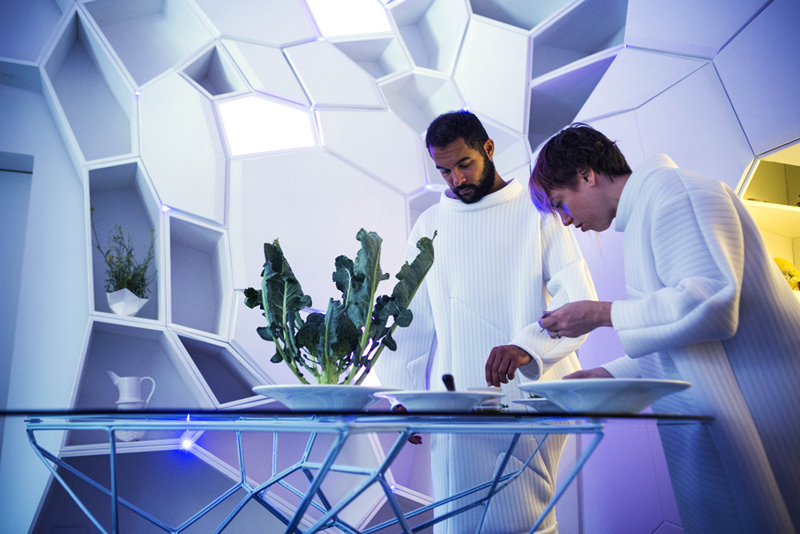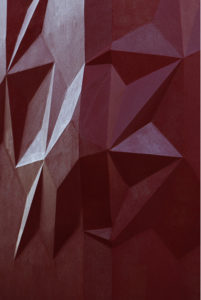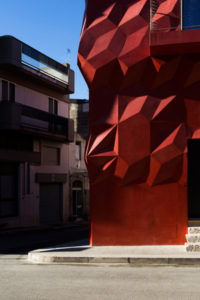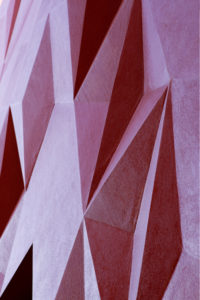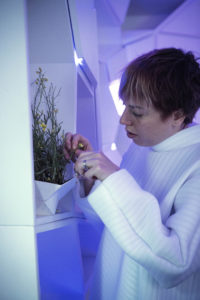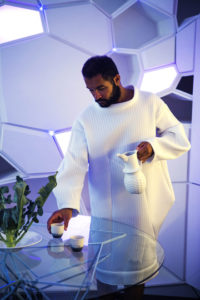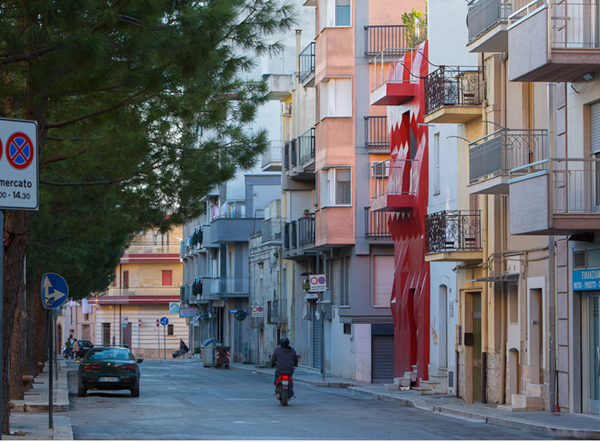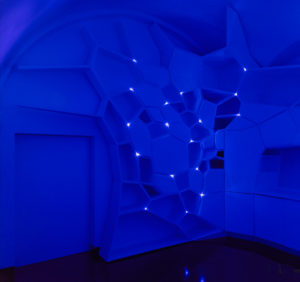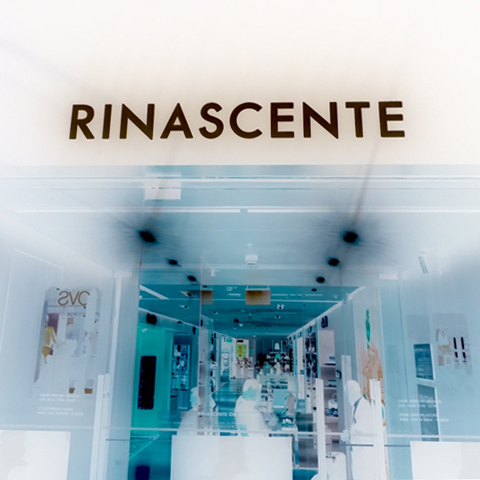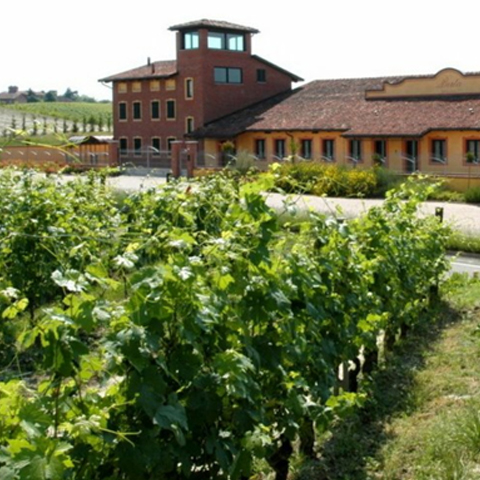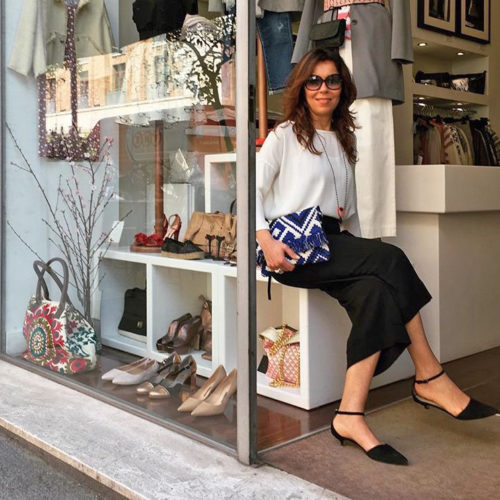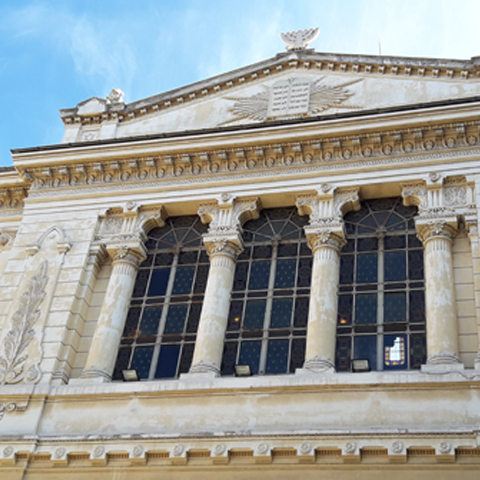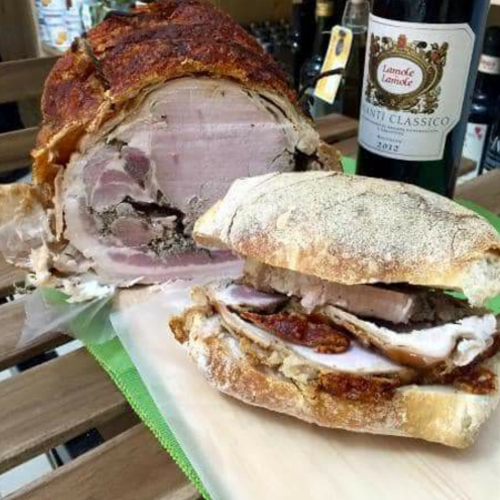In 2015 GG-loop, an arc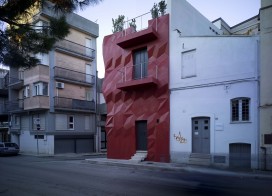 hitectural practice set in Amsterdam, released an extremely unique project called The Seed of Time, composed of three different parts: the Gentle Genius, the Infection, and a culinary artwork. The latter was by artist Monika Kisic from Lima, a member of the art collective Elephants & Volcanoes, also called The Seed of Time. The project was mainly a renovation of GG-loop’s founder Giacome Garziano’s family home and divided in two: the house per se and the office of an art company.
hitectural practice set in Amsterdam, released an extremely unique project called The Seed of Time, composed of three different parts: the Gentle Genius, the Infection, and a culinary artwork. The latter was by artist Monika Kisic from Lima, a member of the art collective Elephants & Volcanoes, also called The Seed of Time. The project was mainly a renovation of GG-loop’s founder Giacome Garziano’s family home and divided in two: the house per se and the office of an art company.
This project got my attention as every detail of the building has a deeper meaning and helped me understand better what architecture really means. On the outside the building is red and so identifies with feelings of madness, passion, and rage; while the interior is blue, which transmits feelings of calmness, purity, loneliness, quietness, and sadness. As described on their website, the house is a combination of “the conscious and the unconscious, of the King and the Queen, of the Sun and the Moon.”
We asked a few questions of Giacomo Garziano about the project.
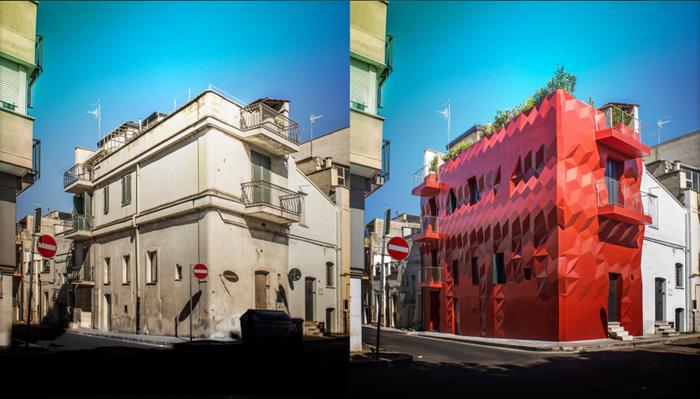
- Why did you decide to renovate your parents’ house?
The original building was built by my great-grandfather in the 50’s and then extended in 1977 by my parents with one extra floor and a nice terrace. Demolition was the most obvious solution, considering the age of the building and the possibility of investment. But we wanted to protect the building and preserve its history.
So a refurbishment was then necessary, since the passing of time was visible on the old facades. My parents and I decided it was time to aesthetically unify in one building the 2 existing uses, to improve the energy efficiency of the building and to give the existing building a coherent look. The budget was limited and this became part of the challenging design.
- When did the idea come to you?
From the time of the decision a deeper introspective process started, being that this was a very personal project. The building has belonged to my family for 4 generations. I was born and grew up there for half of my life with my parents and my 2 sisters. At the time, when we decided to renovate it, I had not lived in Altamura for 13 years. To me, the building was full of sweet and bitter memories, joyful and sad emotions. The renewal focused on this state. I moved back to Altamura for one year and with the refurbishment I aimed to heal the building and to create a new balanced perfect whole.
- How did you decide how to renovate it?
Plato used to say that every idea already exists in a sphere called Hyperuranium. When you look at something, you have an idea of it that has an image in this sphere. While looking at the old building over the year the image, or intuition, of the new building crystallized and developed, taking the form we can see now. The building somehow was meant to be there already but it needed the right time to reveal itself.
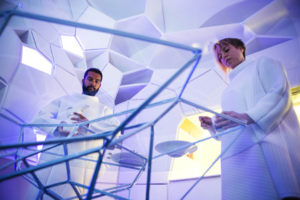 The foundations of the current edifice were built on large stones that, according to ancient maps, could belong to the bottom of a tower from the time of Turkish domination. At the beginning I imagined to restore the building by giving it a coherent fortress-like look again. Hence the walls of the tower are built out of prismatic stones, each of them representing an event of the family inhabiting the tower. In some parts the surface appears flat; calmer, representing the peacefulness and joy the family has experienced. In others the surface is more chaotic, revealing the intensity of some specific dramatic moments. The whole story of my family is hidden in the pattern of the facade.
The foundations of the current edifice were built on large stones that, according to ancient maps, could belong to the bottom of a tower from the time of Turkish domination. At the beginning I imagined to restore the building by giving it a coherent fortress-like look again. Hence the walls of the tower are built out of prismatic stones, each of them representing an event of the family inhabiting the tower. In some parts the surface appears flat; calmer, representing the peacefulness and joy the family has experienced. In others the surface is more chaotic, revealing the intensity of some specific dramatic moments. The whole story of my family is hidden in the pattern of the facade.
- I have read that you chose the color red as it is one of the strongest colors to reach people not only visually but also physically. Being the objective was to get a strong response, what were the actual responses the building got?
The strong responses were a consequence, surely not the objective. The color was a conscious choice given by an observation upon the Genius Loci.
Red is the color of fire and represents extreme stages of emotions: rage and fear of course, but also joy and love. Red acts like a mirror of the self. Hence the reaction to it depends on the really personal perception of it. The dormant feelings in the subconscious of the viewer are awakened and stirred, augmenting the intensity of the predominant emotion.
Furthermore, red belongs to the local heritage: in the beginning of 1900, many public buildings and rural farms used it as prestigious color.
Also the building is situated in Via Raffaello Sanzio (Raphael). Red, together with blue and gold, was the most precious color in the Renaissance when Raphael operated. Blue and gold are also present in the facade: I wanted the building to vibrate over the whole day turning from red to blue, reflecting the sky thanks to the glossy finish, and from red to gold thanks to the more subtle golden vibrations of the glitter.
To finally answer your question, because of the properties of red, reactions were and still are both really positive or really negative, but always very extreme in both directions; and sometimes also extremely funny. Once I heard someone say, “What’s this? The house of Lady Gaga!?”
I learned to understand what people see in the building but I don’t judge it. I believe one day all will be clear and the building will be accepted for what it is and become part of the local collective consciousness.
- Gentle Genius, Genius Loci, the spirit of the place. What exactly does it mean to you?
I believe that the city and its various parts can be seen as a music score; the edifices acting as notes played by different instruments simultaneously.
A melody is created by what the Romans used to call Genius Loci, the spirit of the place, the conductor of the city. Historic centres usually have a clear, harmonious melody, but oftentimes the soundscapes of the outer layers of a city are disrupted, lacking a conductor able to integrate architectonic interventions throughout space and time. Notes follow each other without a scheme: unbalanced and creating feelings of abandon and indifference.
I know every corner of the district where The Seed of Time is born and I am aware of how that area has changed over the last 60 years. On that particular plot my great-grandfather built several houses for all the members of his ever-growing family.
The pictures of my family, when the district was built in 50s, show a totally different area, a rural area where all the houses looked the same. The Genius Loci; the spirit of the place, the director of the city; was there and in that part of the city. It composed vernacular music in the form of tiny houses, built with the same material, in same heights and color through the same hands.
Then speculation came in the 70s and most of these rural houses were destroyed, to be replaced by big monotone tall concrete building blocks. The Genius Loci lost its power and was repressed and forgotten. While we are talking now, more old buildings are being demolished in this and other areas of the city.
But the area’s Genius Loci, after decades of abandon, has finally arisen from its sleep.
The spirit is alive and manifests itself over the whole day throughout the façade. It vibrates and due to its structure, creates an ever-moving surface.
The Gentle Genius is red because red represents its strength, its pride and its will to generate awareness of the critical current condition. It aims to set a new key in the urban music score, recovering a deep note lost in time, reinventing local instruments to manifest as a sound from the future, allowing the Genius Loci to compose new music again.
The spirit has found a place to emerge again. He touches or shakes those that are outside, and protects and shelters those that have welcomed him.
- Were your parents thrilled when you told them about the project?
It was a difficult project since the beginning, because it’s not a standard refurbishment obviously, but also because it’s very personal as I said. At the beginning it was hard to transfer my vision to them and also to the builders. There were doubts till the last minute before we started the construction.
But my parents completely trusted me and in the end, when we removed the scaffolds around the building, the Gentle Genius was revealed to their proud eyes.
- Was it already decided that part of the building was to be the office of the Elephants and Volcanoes association? What association is it exactly?
Part of the whole project is the refurbishment of the small original apartment from 50s. The interior is called “The Infection”. Together with “Gentle Genius”, it forms the whole “The Seed of Time”. This interior was meant to be an apartment for my visits to my family. But after we completed it, I decided that the space and its story needed to be shared, I couldn’t use it only myself.
The decision to make it the E&V Italian office came afterwards, together with the opening event of the project and then to make it also a museum, which will be very soon possible to visit. During the opening event, visitors were guided through the sculptural space by four actors (members of the art collective). A culinary intervention, a dance performance, light and sound installations, a video projection, and costumes transported the visitor into a parallel reality where the past, present, and future were merged to alter perception and open new pathways of perspective.
The performance was held by E&V with the guest artists: choreographer Loïc Perela, fashion designer Min Li, and video director Juliana Gomez
Elephants and Volcanoes is an art collective composed by 6 international professional creatives and friends: Annika Kappner (DE) visual artist, Clovis Wieske (NL) art director/graphic designer, Eric Maltz (US) composer, Michael Sieber (CH) photographer, Monica Kisic (PE) culinary artist, and Giacomo Garziano (IT) architect. We founded the group last year with the scope to generate a dialogue between the various disciplines each of us works with. With the combination of these disciplines, we aim to create novel forms of artistic expressions and experiences for our audiences.
- Tell me a little about yourself. How did you decide to become an architect, why in Amsterdam and not in Italy?
When I was a kid I used to draw houses like shuttles, with sonic reactors that could bring them everywhere.
I carried with me this idea that brought me to study music first, then architecture in Florence and Paris. During my studies I realized that I needed to live and work in a place where history is not a constraint, where the golden past is not a limit but a reference point for further developments and progress. There are very few countries where this happens; one of them is surely the Netherlands. Immediately after my graduation, I moved there. My experience was absolutely positive and I had chance to work for great architectural offices like NIO Architecten and UNStudio.
In 2014 I opened my studio where the idea of the “flying houses” developed till the point that we are working on sustainable domestic spaces that are alive and act almost like avatars of the inhabitants. “The Infection” is a first prototype of a living domestic organism where human beings coexist with their surroundings rather than dominating it.
But as you know, this actually happened in Italy!!!
